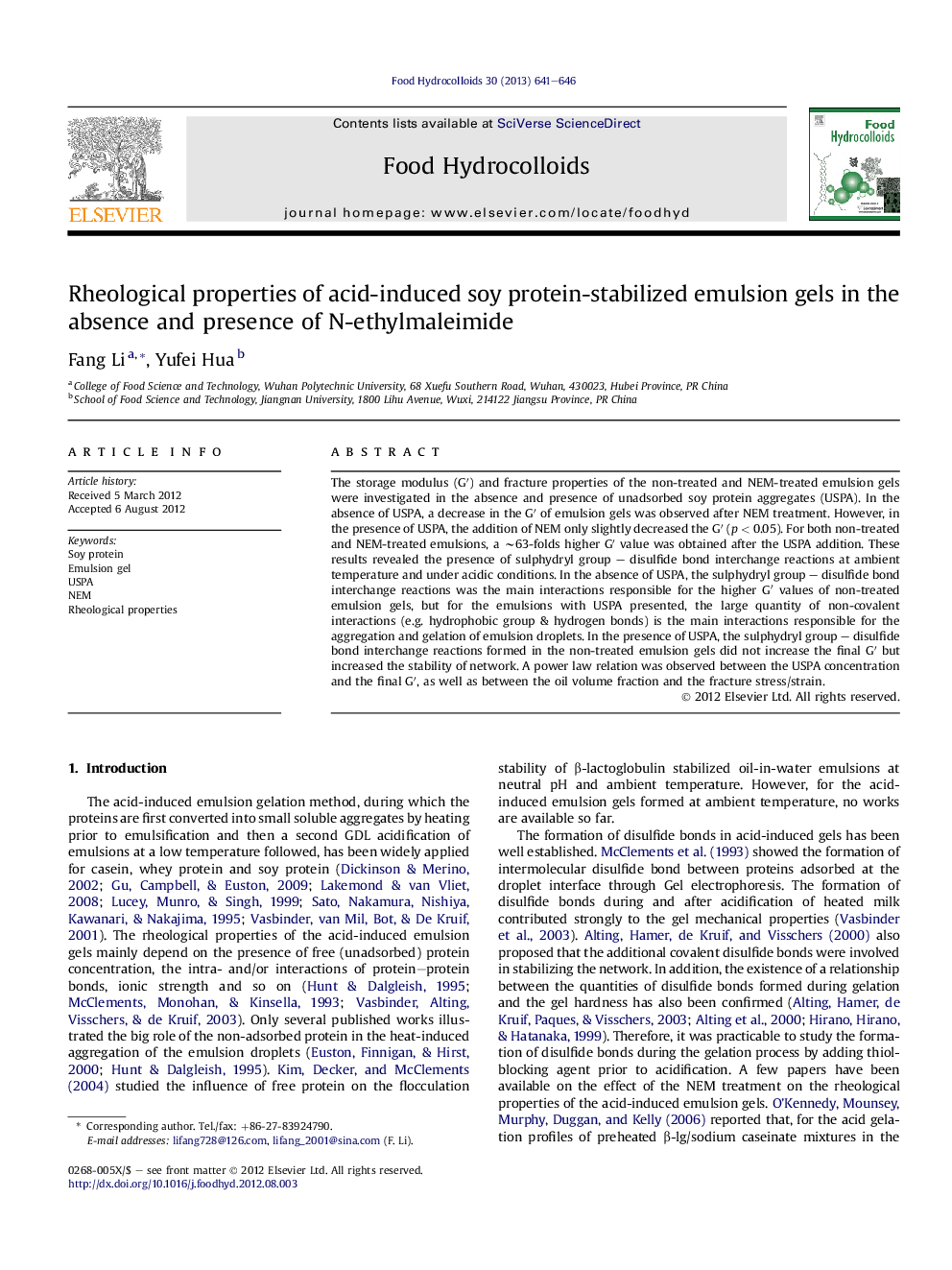| Article ID | Journal | Published Year | Pages | File Type |
|---|---|---|---|---|
| 604085 | Food Hydrocolloids | 2013 | 6 Pages |
The storage modulus (G′) and fracture properties of the non-treated and NEM-treated emulsion gels were investigated in the absence and presence of unadsorbed soy protein aggregates (USPA). In the absence of USPA, a decrease in the G′ of emulsion gels was observed after NEM treatment. However, in the presence of USPA, the addition of NEM only slightly decreased the G′ (p < 0.05). For both non-treated and NEM-treated emulsions, a ∼63-folds higher G′ value was obtained after the USPA addition. These results revealed the presence of sulphydryl group – disulfide bond interchange reactions at ambient temperature and under acidic conditions. In the absence of USPA, the sulphydryl group – disulfide bond interchange reactions was the main interactions responsible for the higher G′ values of non-treated emulsion gels, but for the emulsions with USPA presented, the large quantity of non-covalent interactions (e.g. hydrophobic group & hydrogen bonds) is the main interactions responsible for the aggregation and gelation of emulsion droplets. In the presence of USPA, the sulphydryl group – disulfide bond interchange reactions formed in the non-treated emulsion gels did not increase the final G′ but increased the stability of network. A power law relation was observed between the USPA concentration and the final G′, as well as between the oil volume fraction and the fracture stress/strain.
Graphical abstractIn this work, the rheological properties of acid-induced soy protein-stabilized emulsion gels in the absence and presence of NEM were investigated with a rheometer at small and large deformation. The storage modulus (G′) and fracture properties of the non-treated and NEM-treated emulsion gels were investigated in the absence and presence of unadsorbed soy protein aggregates (USPA). These results revealed the presence of sulphydryl group – disulfide bond interchange reactions at ambient temperature and under acidic conditions. In the absence of USPA, the sulphydryl group – disulfide bond interchange reactions was the main interactions responsible for the higher G′ values of non-treated emulsion gels, but for the emulsions with USPA presented, the large quantity of non-covalent interactions (e.g. hydrophobic group & hydrogen bonds) is the main interactions responsible for the aggregation and gelation of emulsion droplets.Figure optionsDownload full-size imageDownload as PowerPoint slideHighlights► Unadsorbed soy protein aggregates is called USPA. ► In the absence of USPA, the G′ of emulsion gels decreased after NEM treatment. ► In the presence of USPA, the G′ of NEM-treated emulsion gels slightly decreased. ► Sulphydryl group – disulfide bond interchange reactions presented. ► Sulphydryl group – disulfide bond interchange reactions stabilized gel network.
